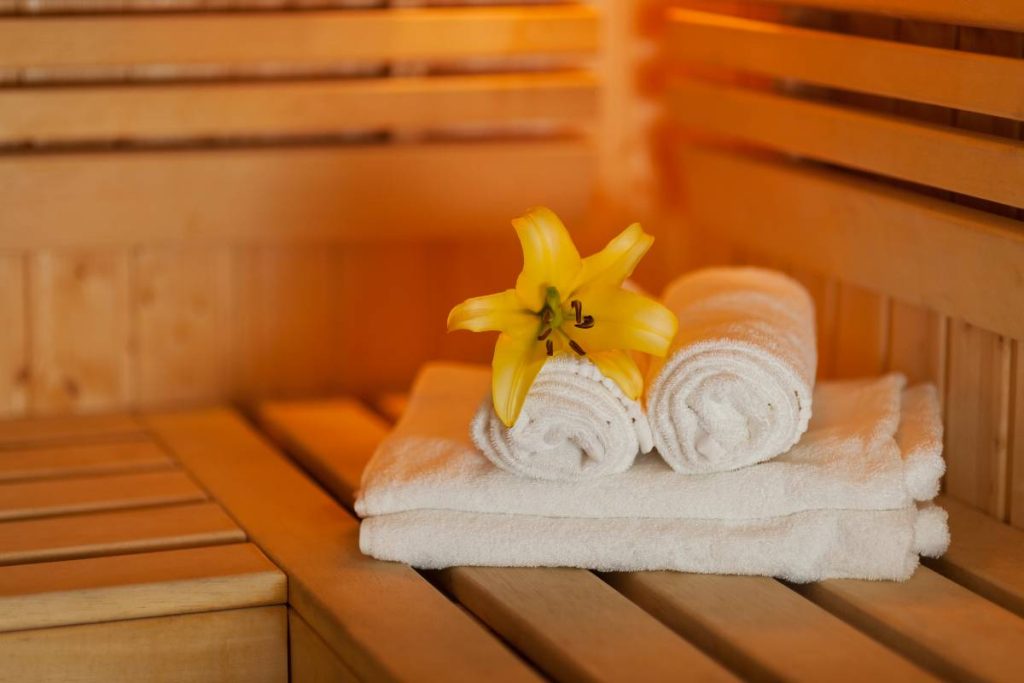Do you want to make your home more energy-efficient to lower your utility bills when you remodel your current home or build a new one?
Making your home more energy-efficient is a multifaceted process that involves understanding how energy is used and identifying areas where efficiency can be improved.
This comprehensive guide will walk you through various methods to enhance your home’s energy efficiency, from simple lighting adjustments to more significant structural changes.
1. Lighting Adjustments
Lighting is one of the easiest areas to improve energy efficiency in a home. Simple changes can lead to significant savings in electricity consumption.
Switching to LED Bulbs
Switching out your old incandescent bulbs for LED ones is a smart move. LEDs aren’t just good for your wallet, they’re a boon for the environment too. These bulbs use much less electricity and have a lifespan that outstrips traditional bulbs by years.
Think about the vibe you want in each room when picking out LEDs. Cozy, warm lighting works great in bedrooms and living areas, while you might want something brighter and cooler for a home office.
LEDs come in various brightness levels too, so you can get just the right amount of light. It’s an easy swap that brings down your energy bills from the get-go, making your home more efficient and eco-friendly in one fell swoop.
Utilizing Natural Light
Harnessing the power of the sun, natural light can be your best friend in energy-saving. It’s all about letting the sunshine in and making those electric lights take a well-deserved break during the day.
You might want to swap out those heavy drapes for something a bit airier, something that dances with the breeze and lets light spill into your rooms. If you’re up for some changes, why not think about bigger windows or maybe a skylight?
They can brighten up the darkest corners of your home, bringing in that cheerful, natural glow. There’s nothing quite like the feel of sunshine streaming through the window to lift your spirits and give your home a cozy, natural vibe.
Smart Control of Lighting Fixtures
Now, let’s talk about getting smart with your lights. Imagine walking into a room, and the lights just know to turn on – or dim down when it’s time for a movie.
Smart lighting control is like having a bit of magic at your fingertips. You can set moods, schedule lights to turn on or off, and even control them when you’re not home, all from your phone or a voice command. It’s not just about convenience, it’s about being efficient.
No more leaving lights on by accident or wasting energy. Plus, it’s a small step towards making your home a bit more futuristic. It’s time to give those old light switches an upgrade and step into the world of smart lighting.
2. Home Insulation and Sealing
Proper insulation and sealing are critical for maintaining an energy-efficient home, keeping the desired temperatures in and the unwanted weather out.
Importance of Insulation
Effective insulation works to minimize the heat exchange between a home’s interior and the external environment, directly impacting energy usage, especially in heating and cooling.
Insulation’s value extends beyond energy savings, as it plays a crucial role in maintaining consistent indoor temperatures, contributing to a comfortable living space and a reduced ecological footprint.
Advanced Insulation Techniques
The field of home insulation has evolved significantly, introducing advanced materials and methods that offer superior thermal resistance.
Innovations like spray foam insulation, reflective barriers, and thermal wraps are transforming how homes retain heat.
These advanced solutions not only provide superior insulation compared to traditional materials but also cater to the unique needs of different home structures, from older homes with unique architectural features to modern constructions aiming for minimalistic design and maximum efficiency.
Effective Sealing Strategies
Sealing a home against air leaks involves identifying and addressing gaps where air can escape, such as around windows, doors, and utility entries.
Utilizing sealants, weatherstripping, and draft excluders can dramatically improve a home’s energy retention. Beyond just conserving energy, effective sealing also protects against external elements, enhances indoor air quality, and contributes to the longevity of heating and cooling systems by reducing their operational strain.
3. Heating and Cooling Systems Optimization
Heating and cooling systems optimization explores how upgrading to more efficient HVAC systems, coupled with regular maintenance and smart thermostat usage, can significantly reduce energy consumption.
The focus is not only on selecting the right systems but also on their optimal operation and maintenance, which are key to achieving long-term energy savings and enhancing the comfort of your home.
Upgrading HVAC Systems
Upgrading to a modern HVAC system is a transformative step for any home’s energy efficiency. Today’s high-efficiency systems are designed to provide optimal heating and cooling while consuming significantly less energy than older models.
Key considerations include system size, energy rating, and compatibility with existing home infrastructure.
Additionally, newer HVAC systems often come with eco-friendly refrigerants and advanced features like variable speed motors that adapt to changing temperature needs, further enhancing energy savings and reducing environmental impact.
Regular Maintenance and Filter Replacement
You can dramatically enhance the efficiency of your HVAC system through diligent maintenance and timely filter replacement. Periodic inspections and cleanings ensure that your system functions optimally, avoiding the escalation of minor issues into costly repairs.
For you, the key to maintaining efficiency is in the details, like routinely replacing HVAC filters. A fresh filter not only promotes better airflow but also reduces the system’s energy demands.
By setting a regular schedule for filter checks and replacements, you contribute to both the conservation of energy and the improvement of your home’s air quality.
Smart Thermostats for Enhanced Control
Smart thermostats transform how you manage indoor climates, offering precise temperature control tailored to your schedule.
A smart thermostat adjusts the environment of your home with minimal input, learning from your habits to optimize energy use. The real triumph of these devices lies in their capacity to balance your comfort with energy savings, making a noticeable difference in your utility costs and environmental footprint.
4. Water Heating and Conservation
Efficient water heating and conservation enhance water heating efficiency, such as the adoption of energy-efficient water heaters, including tankless and solar options.
They also minimize water wastage, which not only conserves a precious resource but also reduces the energy required for heating water.
Energy-Efficient Water Heaters
Modern tankless water heaters, which heat water on demand, eliminate the energy losses associated with traditional tank storage systems. Meanwhile, solar water heaters present an eco-friendly alternative, harnessing the power of the sun to heat water.
Both these options not only offer long-term savings on utility bills but also contribute to a reduction in carbon footprint.
As you consider upgrading your water heating system, these energy-efficient choices can be pivotal in enhancing your home’s sustainability.
Reducing Water Waste
Addressing water waste in your home goes hand-in-hand with energy conservation. Simple changes in daily water usage, like fixing leaky faucets or choosing efficient showerheads, can lead to significant savings.
For instance, opting for low-flow showerheads reduces water consumption without compromising pressure, thereby saving energy used for heating. Also, being mindful about the length of showers and turning off the tap while brushing teeth are small steps with a big impact.
5. Windows and Doors Efficiency
When you focus on your home’s windows and doors, you’re targeting key areas for energy savings.
Replacing old, drafty windows with new energy-efficient models can make a world of difference in your home’s insulation. And don’t forget about your doors, proper sealing and insulation here can stop those pesky drafts.
These upgrades not only reduce your energy bills but also make your home more comfortable year-round.
Energy-Efficient Windows
Think about installing energy-efficient windows as a smart investment in your home. These windows, especially those with double or triple glazing, significantly cut down on heat loss in winter and heat gain in summer.
What does this mean for you? Lower energy bills and a more comfortable living space, no matter the season. Plus, they can enhance your home’s curb appeal and increase its value.
Sealing and Insulating Doors
Sealing and insulating your doors is a game-changer for home energy efficiency. It’s all about stopping those little drafts that can add up to big costs.
By sealing gaps and installing proper insulation, you’re essentially wrapping your home in a cozy blanket, keeping the warm or cool air exactly where you want it – inside.
6. Renewable Energy Integration
Solar panels, for example, not only cut down on electricity bills but also reduce your carbon footprint.
It’s not just about solar, though; exploring other renewable options like wind energy can further push your home towards a sustainable future.
Solar Power Implementation
When you install solar panels, you’re not just making an eco-friendly choice, you’re setting up your home to tap into one of nature’s most powerful energy sources.
Solar power offers you the freedom to generate your own electricity, significantly reducing your utility bills. It’s a journey into sustainability, where you can witness firsthand the decrease in your carbon footprint.
Other Renewable Energy Options
Exploring alternative renewable energy sources like wind and geothermal power can also revolutionize your home’s energy approach. Wind turbines capture the energy of breezy days, while geothermal systems utilize the earth’s consistent underground temperatures..
7. Energy-Efficient Appliances and Electronics
Opt for appliances that excel in performance while minimizing energy consumption. Every choice, from your refrigerator to your washing machine, and even your electronics like televisions and computers, can contribute significantly to reducing your household’s energy footprint.
Choosing Energy-Efficient Appliances
When selecting appliances for your home, opting for energy-efficient models is a strategic decision that pays off in the long run. Look for products with the ENERGY STAR label, a symbol of efficiency and quality. From refrigerators that use less electricity to washing machines that conserve water, each appliance choice can significantly impact your energy usage.
Smart Use of Electronics
Smartly using electronics around your home is a key aspect of energy efficiency. It involves being mindful of how and when you use devices like computers, TVs, and gaming consoles.
Simple actions like turning off electronics when not in use, using power-saving modes, and unplugging chargers can make a noticeable difference. Also, choosing electronics with better energy ratings contributes to lower power consumption.
8. Behavioral Changes for Energy Efficiency
Adopting energy-efficient behaviors is as crucial as any technological upgrade in your home. Simple changes in daily habits can lead to significant reductions in energy usage.
Conserving Energy in Daily Activities
Simple actions like switching off lights when not needed, adjusting the thermostat appropriately, and using appliances efficiently can collectively make a big difference. It also includes being mindful of small things like not leaving the TV on standby or overfilling the kettle..
Utilizing Energy During Off-Peak Hours
Making the most of off-peak hours for energy usage can be a smart strategy in your quest for efficiency. This means running appliances like dishwashers, washing machines, and dryers during times when energy demand is lower, typically during late evenings or early mornings.
9. Regular Home Energy Audits
Regular energy audits help identify areas where energy is being wasted and provide insights into possible improvements. Whether it’s through a professional service or a DIY evaluation, energy audits can uncover hidden issues like poor insulation, air leaks, or outdated appliances.
Professional Energy Audits
Hiring in professional energy audits offers a comprehensive assessment of your home’s energy use. These audits, conducted by experts, involve a thorough examination of your home’s structure, appliances, and energy systems.
The professionals use advanced tools to detect areas of energy loss, such as infrared cameras for identifying insulation gaps. They provide you with a detailed report highlighting areas for improvement and suggesting specific energy-saving measures.
DIY Energy Audits
You can also conduct an energy audit by yourself, which is a practical and insightful way to take charge of your home’s energy efficiency.
This hands-on approach involves inspecting your home for common issues like air leaks around windows and doors, checking insulation levels, and examining heating and cooling systems.
Tools like a thermometer can help assess refrigerator efficiency while observing the condition of seals and weather stripping can indicate areas needing attention.
Conclusion
Every small step you take contributes to a larger goal of reducing energy consumption and fostering a sustainable lifestyle. The path to energy efficiency is continuous, evolving with new technologies and insights, and every effort you make is a stride towards a greener, more energy-conscious future.
Hope these tips can make your current home or new home more Energy efficient.





